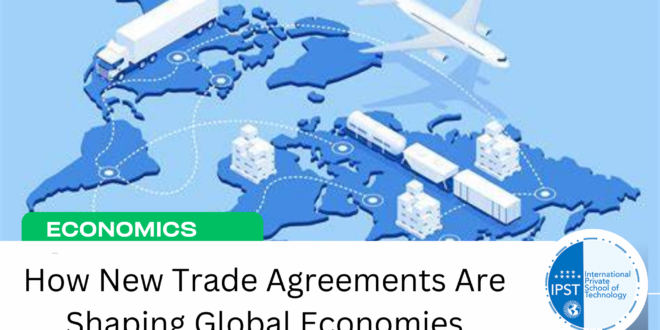Introduction
Global trade has always been a critical driver of economic growth. However, in recent years, new trade agreements have been reshaping the way countries conduct business on an international scale. These agreements are altering trade relationships, creating new opportunities, and addressing challenges such as tariffs, market access, and economic inequality. This article delves into the impact of new trade agreements on global economies and the future of global trade.
The Rise of Regional Trade Agreements
While multilateral trade agreements have historically been at the forefront of global trade, regional trade agreements (RTAs) are gaining significant traction. These agreements, which involve fewer countries, often offer more flexibility and are easier to negotiate compared to global pacts. Regional agreements such as the Comprehensive and Progressive Agreement for Trans-Pacific Partnership (CPTPP) and the Regional Comprehensive Economic Partnership (RCEP) are redefining trade dynamics in their respective regions and beyond.
These agreements facilitate easier market access, reduce tariffs, and promote economic integration. As nations seek to strengthen their regional ties, the importance of RTAs in shaping the global trade landscape cannot be overstated.
The Impact of Digital Trade
In the age of digital transformation, trade agreements are also adapting to new technological advancements. Digital trade is a rapidly growing sector, encompassing everything from e-commerce to cross-border data flows. The United States-Mexico-Canada Agreement (USMCA), for example, includes provisions aimed at expanding digital trade by reducing barriers to the free flow of data and protecting intellectual property in the digital space.
Countries that embrace digital trade agreements will likely benefit from improved access to global markets, fostering innovation, and boosting their economies. Additionally, digital trade can lead to the growth of small and medium-sized enterprises (SMEs), which can leverage global platforms to expand their reach.
Sustainability and Trade Agreements
Another key consideration in the future of global trade is sustainability. As global awareness of environmental issues grows, trade agreements are increasingly incorporating sustainable development goals. For instance, agreements like the European Union-Mercosur Agreement include commitments to environmental protection, labor rights, and corporate social responsibility.
Sustainable trade practices are not only beneficial for the environment but also provide long-term economic stability. By focusing on sustainability, countries can create more resilient supply chains and reduce the risks associated with climate change and resource depletion.
Trade Wars and Protectionism: A New Era?
While new trade agreements are driving positive change, there are also concerns about rising protectionism and trade wars. Recent tensions between major trading powers like the U.S. and China have raised questions about the future of free trade. Tariffs, quotas, and trade barriers can disrupt established supply chains and hinder the global flow of goods and services.
Despite these challenges, the trend towards regional cooperation and multilateral agreements suggests that trade protectionism may be short-lived. Countries are increasingly realizing the importance of cooperation in addressing global challenges, including pandemics, climate change, and economic recovery.
The Future Outlook of Global Trade
Looking ahead, global trade is poised to evolve significantly. The new trade agreements being negotiated today will continue to shape international commerce for decades to come. As countries adapt to the digital economy, sustainability goals, and evolving geopolitical landscapes, the future of trade will be characterized by increased cooperation, innovation, and greater emphasis on global challenges.
Conclusion
The future of global trade is being defined by new trade agreements that reflect the changing nature of international commerce. These agreements are not only fostering economic growth but also addressing contemporary issues like digital trade and sustainability. As countries continue to negotiate and implement these agreements, global trade will evolve to meet the needs of a more interconnected and dynamic world economy.
 International Private School of Technology المدرسة الدولية الخاصة للتكنولوجيا Private School مدرسة خاصة للتكوين المهني
International Private School of Technology المدرسة الدولية الخاصة للتكنولوجيا Private School مدرسة خاصة للتكوين المهني


